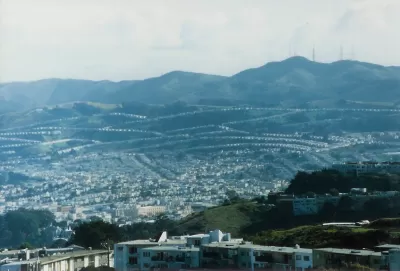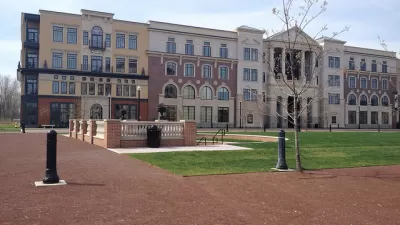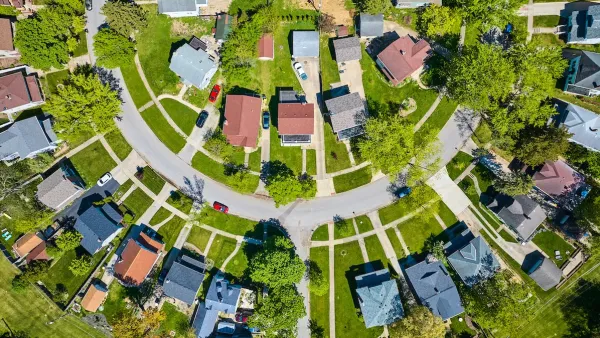A new book about unconventional suburbs challenges the perception that these were socially and racially homogenous places.

In an excerpt from her new book Radical Suburbs, Amanda Kolson Hurley describes various experimental communities that sprung up from the 1820s to the 1960s outside of cities and challenge conventional notions of American suburbs. "These groups had very different backgrounds and motivations, but all of them believed in the power of the local community to shape moral and social values, and in the freedom provided by outskirts land to live and build in new ways."
Hurley says that the perception of suburbs as filled with tracts of cookie-cutter homes where middle-class whites resided is not wrong, but it is a limited understanding of their diversity. Lower-income suburbs existed as did black and integrated suburbs, suburbs based on religious ideology, and suburbs founded by anarchists and socialists.
For Hurley, looking back at the past is important as demographic, social, and economic changes influence the transformation of present-day suburbs. "Heavy-handed zoning and land-use regulations might try to make time stand still, but nothing is predestined about the future of suburbia, where most Americans live. Instead of despairing over the suburbs’ problems, we should be inspired by suburban history to try to solve them."
FULL STORY: The Secret History of the Suburbs

Maui's Vacation Rental Debate Turns Ugly
Verbal attacks, misinformation campaigns and fistfights plague a high-stakes debate to convert thousands of vacation rentals into long-term housing.

Planetizen Federal Action Tracker
A weekly monitor of how Trump’s orders and actions are impacting planners and planning in America.

San Francisco Suspends Traffic Calming Amidst Record Deaths
Citing “a challenging fiscal landscape,” the city will cease the program on the heels of 42 traffic deaths, including 24 pedestrians.

In U.S., Urban Gondolas Face Uphill Battle
Cities in Latin America and Europe have embraced aerial transitways — AKA gondolas — as sustainable, convenient urban transport, especially in tricky geographies. American cities have yet to catch up.

Detroit Says Problems With Property Tax Assessments are Fixed. Advocates Disagree.
With higher-valued properties under assessed and lower-valued properties over assessed, advocates say there's still a problem with Detroit's property tax system.

Defunct Pittsburgh Power Plant to Become Residential Tower
A decommissioned steam heat plant will be redeveloped into almost 100 affordable housing units.
Urban Design for Planners 1: Software Tools
This six-course series explores essential urban design concepts using open source software and equips planners with the tools they need to participate fully in the urban design process.
Planning for Universal Design
Learn the tools for implementing Universal Design in planning regulations.
Heyer Gruel & Associates PA
JM Goldson LLC
Custer County Colorado
City of Camden Redevelopment Agency
City of Astoria
Transportation Research & Education Center (TREC) at Portland State University
Jefferson Parish Government
Camden Redevelopment Agency
City of Claremont




























